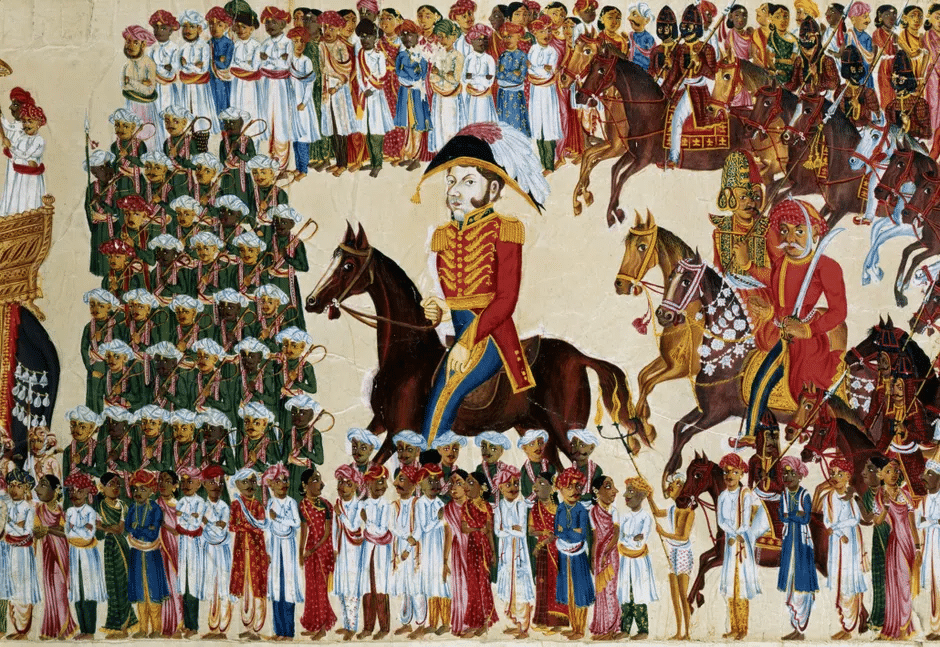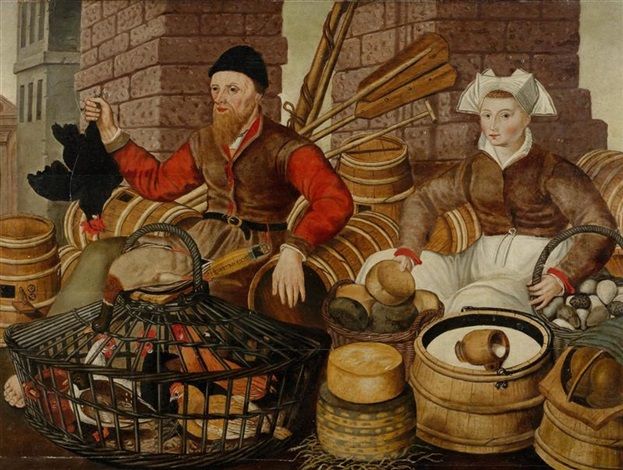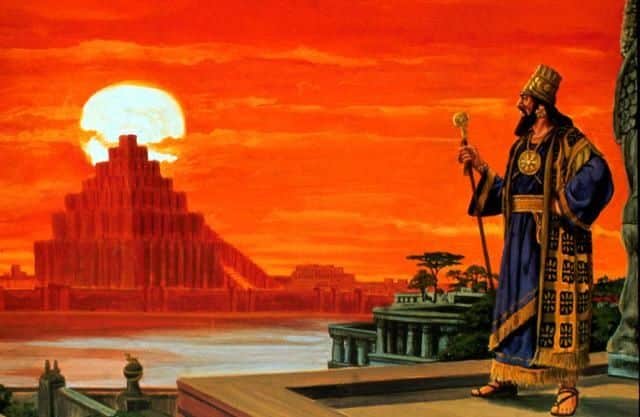East India Company

Contents
- Introduction
- The Triangular Trade
- EIC Control over International Trade
- Protests Against EIC in Britain
- The Formal Closure of EIC
- Sources

Introduction
The East India Company has a long and distinguished history that dates back to the 17th century. The company was founded in 1600 by the Royal Charter of Queen Elizabeth I, with the intention of trading spices, textiles, and other goods from both India and China. Initially trading only in luxury items such as fine silks and spices, the company soon expanded into more areas including saltpetre and opium.
The company rapidly grew in power over the next two centuries, becoming a major player in world trade through its operations across Asia. The East India Company maintained considerable autonomy from the central government, allowing it to expand its military capabilities within its own territories before being eventually taken over by British imperial forces.
The Triangular Trade
The triangular trade of the East India Company was a major commercial venture of the early modern period. This trading system, which ran from the 1600s to the 1800s, linked Europe, Africa and Asia in a profitable network of commodities exchange. The East India Company’s involvement in this triangular trade transformed economic and social networks across continents by establishing an efficient system for exchanging human labour, goods and crops.
The basic model of triangular trade saw European ships transport manufactured goods to African ports where they were traded for slaves who were then taken across the Atlantic Ocean to work on plantations in North America or the Caribbean Islands. Meanwhile, other ships transported Asian commodities like cotton and spices back to Europe where they could be sold at premium prices due to their relative rarity.
EIC Control over International Trade
The EIC gained control of the trade of salt and tea and the sale of opium to China. During this time period, there were two primary origins of tea traded by the East India Company: Chinese green teas from Canton (Guangzhou) and Indian black teas from Assam or Bengala districts. Tea was shipped by sea route directly from Asia to England; it was also traded through Holland and other European countries on behalf of England’s government monopoly system. EIC imported so much tea to Britain that it became a cheaper drink than locally-made beer. Sugar import was also cheap because of slave plantations in the Caribbean and the British became tea drinkers.
In 1773, the British government imposed a tax on tea imported to the American colonies. This controversial move led to one of the most memorable events in U.S. history—the Boston Tea Party Revolution. On December 16th, a group of colonists, led by Samuel Adams and other prominent members of the Sons of Liberty group, gathered at Griffin’s Wharf in Boston harbour for their protest against British taxation without representation. They boarded three ships owned by East India Company and destroyed 342 chests of tea worth over £10,000 by throwing them into the sea.
This early act of defiance became an important symbol in colonial resistance to England’s oppressive policies and was a major factor in leading up to the American Revolution that began two years later in 1775.
The EIC exchanged opium from India for tea, which is solely cultivated in China. Despite the Chinese government’s ban on opium, the EIC nonetheless smuggled it. The First Opium War, which took place between 1839 and 1842, was a conflict that occurred between the British Empire and the Qing dynasty of China. This war was fought due to the increasing trade in illegal opium from India to China. The Chinese government had tried to prevent this illegal trade but Britain refused to stop trading in opium, thus leading to an armed conflict between the two nations.
Prior to this war, Britain had been attempting for some time to increase its export of opium into China despite the fact that it was banned by imperial decree. As a result of this ongoing tension between Britain and China over the illegal drug trade, both sides eventually declared war on one another in June of 1839.
Other important goods traded by EIC were Silk, Saltpetre, Porcelain, Coffee, Indigo, Wool and Sliver. The ships of the company were well armed that a typical Indiaman (name of EIC ship) would have between 30 and 36 powerful guns. Because of these ships, the Royal Navy of Britain was able to control the Indian Ocean. Following the Act of Union in 1707, which united England with Scotland, EIC ships were distinguished by their flag, which at first had red and white horizontal stripes with a St. George cross in the corner and later a Union Jack.
Protests Against EIC in Britain
In the late 18th century, Britain experienced a series of protests against the East India Company (EIC). The EIC had been established in 1600 and was granted a monopoly over trade with India and China. This enabled it to control vast sums of British wealth and influence in the region. Protests against the EIC began as early as 1773 when citizens attacked its offices in London’s Leadenhall Street. Riots also spread to other parts of Britain, including Manchester and Liverpool.
The discontent among Britons was primarily fuelled by anger over high taxes imposed by the company on tea imports from India and China. This led to boycotting tea—an act that encouraged domestic producers to invest more in local tea production. The British public also opposed what they perceived as unfair corporate practices carried out by the EIC such as monopolizing markets for their own gain.
The old English wool trade was being hurt by the EIC’s enormous imports of Indian textiles, and there were complaints in Britain that the EIC was stealing too much silver from the domestic economy. One solution was to increase import taxes on cotton and enact legislation that favoured wool, such as the decision that forbade burials of English citizens in anything other than wool garments in the last quarter of the 17th century. Laws subsequently went even further and outright prohibited the importation of completed cotton cloth into Britain, but by the second half of the 18th century, the material had become so widely used that it had given rise to a manufacturing sector. But suddenly, in heavily populated areas like the city of Lancashire, Britain was creating its own big textile mills. In this way, the Industrial Revolution in Britain as a whole can be attributed in part to the EIC.
The EIC’s trade monopoly was criticised for being unfair and hardly serving the interests of the British people as a whole. Independent traders who sought a piece of the trade with India frequently brought the EIC before the British courts, but the EIC effectively maintained that properly speaking, it had no monopoly because it had started the trade and not taken it over from another party.
The EIC did contribute to the growth of cities that are now major international hubs, such as Mumbai, Singapore, and Guangzhou (Canton), and it opened up new export markets for goods made in the UK and elsewhere, but the conditions of the contracts it imposed were never particularly beneficial to anyone but the EIC.
The Formal Closure of EIC
The East India Company (EIC) was a major British trading corporation that held significant influence in India, as well as other parts of Asia, from the early 1600s until the late 1800s. Originally formed to pursue trading opportunities in the East Indies and to expand the territories of Britain’s expanding empire, EIC eventually evolved into a large-scale trading corporation with political and military power. On 1st July 1858, after over 200 years of operation, Queen Victoria announced that EIC would be dissolved. This marked an end to one of Europe’s most successful commercial enterprises and its formal closure was met with much debate about its legacy.
In terms of economic success, EIC achieved what today could be considered unimaginable – it established a monopoly in trade across multiple continents and led to substantial profits for both those who invested in it and for shareholders.
Sources:
Gilmour, David. The British in India. Penguin,2019
Barrow, Ian. The East India Company,1600-1858. Hackett Publishing Company, Inc.,2017.

